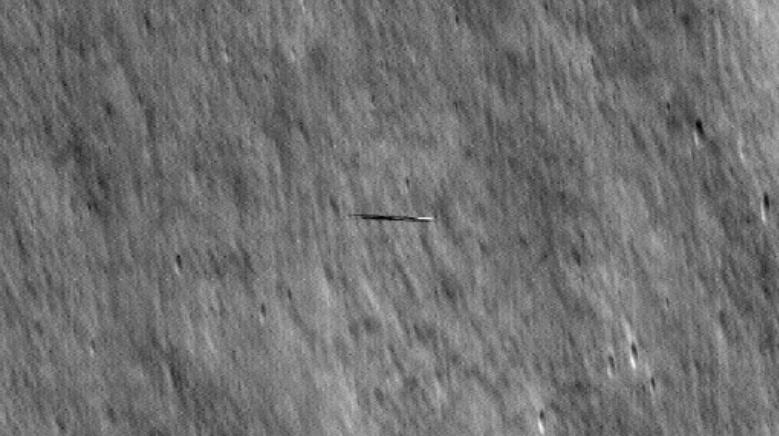In 2009, NASA launched the Lunar Reconnaissance Orbiter (LRO.) Its ongoing mission is to map the lunar surface in detail, locating potential landing sites, resources, and interesting features like lava tubes. The mission is an ongoing success, another showcase of NASA’s skill. It’s mapped about 98.2% of the lunar surface, excluding the deeply shadowed regions in the polar areas.
But recently, the LRO team’s skill was on display for another reason: it captured images of another satellite speeding over the lunar surface.
The Republic of Korea, or what most of us call South Korea, launched their Danuri lunar orbiter in August 2022. It’s the nation’s first lunar orbiter, and its mission is to develop and test technologies—including the space internet—and make a topographic map of the lunar surface. The map will help select future landing sites and identify resources such as uranium, helium-3, silicon, aluminum, and water ice. Danuri carries a suite of instruments, including a spectrometer, a magnetometer, and different cameras. Significantly, it contains a camera that will allow it to image the shadowed polar regions beyond the LRO’s capabilities.

NASA contributed to the Korea Aerospace Research Institute’s (KARI) Danuri mission. NASA built the Shadowcam instrument that images the shadowed regions at the lunar poles.
As a sort of high-five to their fellow space-faring nation, the LRO captured images of Danuri as it sped by under the LRO.
On March 5th and 6th, the pair of orbiters sped by each other at a combined velocity of 11,500 km/h (7,200 mp/h). There were three orbits that put the LRO in a position to capture images of the swiftly moving Danuri. During each orbit, the vertical separation between the two was different.
The LRO was 5 km (3 miles) above Danuri in the first image. The LRO had to change its angle. To catch Danuri, it had to aim 43 degrees down from its usual angle.

On the second orbit, only 4 km (2.5 miles) separated the pair of orbiters.

On the third and final orbit, the separation between the two spacecraft was greater: 8 km (5 miles.) This time, the LRO was oriented at a 60-degree angle.

Danuri is difficult to see in the final image.

This isn’t the first time the pair of orbiters have played the imaging game. Back in April 2023, it was Danuri’s turn to take a picture of the LRO. At the time, the Korean spacecraft passed about 18 km (11 miles) above the LRO and imaged it with its ShadowCam instrument.

This isn’t the first time lunar orbiters have captured each other’s portraits. In 2014, the LRO captured NASA’s Lunar Atmosphere and Dust Environment Explorer (LADEE) before it was sent to impact the lunar surface. Read about it here.

